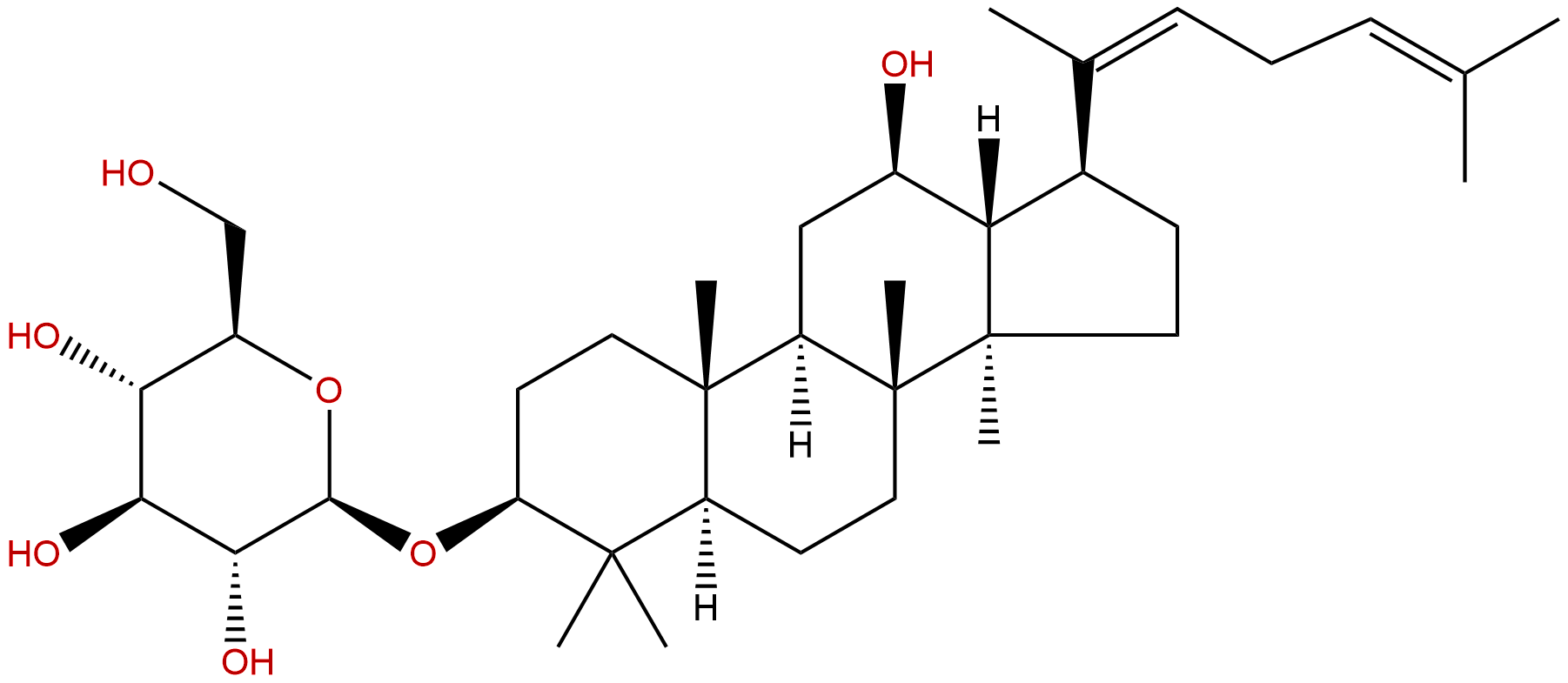Ginsenoside Rh3 Descrtption
Product name: Ginsenoside Rh3
Synonym name:
Catalogue No.: BP0669
Cas No.: 105558-26-7
Formula: C36H60O7
Mol Weight: 604.869
Botanical Source: Panax ginseng
Physical Description: White powder
Type of Compound: Triterpenoids
Purity: 95%~99%
Analysis Method: HPLC-DAD or/and HPLC-ELSD
Identification Method: Mass, NMR
Packing: Brown vial or HDPE plastic bottle
Storage: Store in a well closed container, protected from air and light. Put into refrigerate or freeze for long term storage.
Whenever possible, you should prepare and use solutions on the same day. However, if you need to make up stock solutions in advance, we recommend that you store the solution as aliquots in tightly sealed vials at -20℃. Generally, these will be useable for up to two weeks.
The product could be supplied from milligrams to grams, up to kilograms
Inquire for bulk scale.
Descriptions:
Ginsenoside Rh3 is a bacterial metabolite of Rg5, which is the main constituent of heat-processed ginseng, has anti-inflammatory effect in microglia by modulating AMPK and its downstream signaling pathways.[1]
Ginsenosides Rh3 and Rg5 can suppress swelling of oxazolone-induced mouse ear contact dermatitis, they also reduce mRNA expressions of cyclooxygenase-2, interleukin (IL)-1β, tumor necrosis factor (TNF)-α and interferon (IFN)-γ; the inhibition of ginsenoside Rh3 was more potent than that of ginsenoside Rg5, suggests that ginsenoside Rh3 metabolized from ginsenoside Rg5 may improve chronic dermatitis or psoriasis by the regulation of IL-1β and TNF-α produced by macrophage cells and of IFN-γ produced by Th cells.[2]
Ginsenoside-Rh2 and Rh3 can induce differentiation of HL-60 cells into granulocytes and modulation of PKC isoform levels may contribute to differentiation of HL-60 cells by G-Rh2.[3]
Ginsenosides Rg5 and Rh3 inhibit acetylcholinesterase activity in a dose-dependent manner, with IC50 values of 18.4 and 10.2 uM, respectively; the inhibitory potency of ginsenoside Rh3 is comparable with that of donepezil (IC50=9.9 uM); ginsenoside Rh3 can potently protect memory deficit; suggests that they may protect memory deficit by inhibiting AChE activity and increasing BDNF expression and CREB activation.[4]
References:
[1] Lee Y Y, Park J S, Lee E J, et al. J Agr Food Chem, 2015, 63(13):3472-80.
[2]Yong W S, Bae E A, Dong H K. Arch Pharm Res, 2006, 29(8):685-90.
[3] Kim Y S, Dong S K, Kim S I. Int J Biochem Cell Biol, 1998, 30(3):327-38.
[4] Kim E J, Jung I H, Le T K V, et al. J Ethnopharmacol, 2013, 146(1):294-9.
[5] Wang J Y, Li X Q,Yang X Q. Chinese Herbal Medicine,2008 (02): 225-6.


